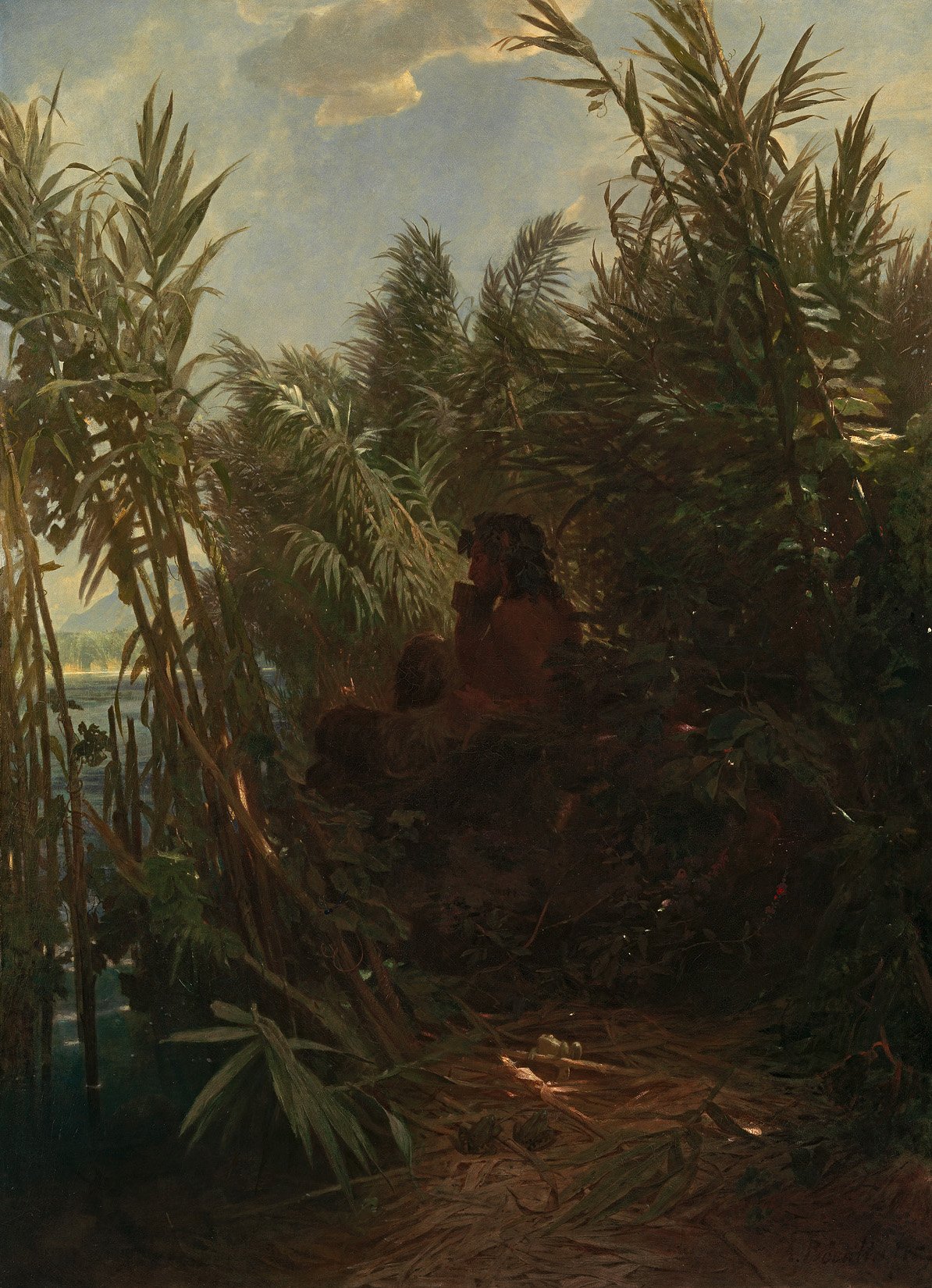Arnold Böcklin
Pan in the Reeds, c. 1856/1857

Arnold Böcklin
Pan in the Reeds, um 1856/1857
Kunst Museum Winterthur, Stiftung Oskar Reinhart, Ankauf, 1928
Foto: SIK-ISEA, Zürich (Philipp Hitz)
Arnold Böcklin’s Pan in the Reeds tells a story of unfulfilled love. In his Metamorphoses, the Roman poet Ovid describes how Pan fell in love with the nymph Syrinx. However, she was repelled by his advances, fled and implored the gods for help. They responded to her plea and instantly transformed the nymph into reeds. As Pan roamed sadly through these reeds and his breath brushed their blades, a haunting sound resulted. Inspired by this, he made himself a musical instrument with the melancholy tones of which he could console himself about the failed romance. And so the pan flute was born.
The painting marks an important turning point in Böcklin’s oeuvre. It was created during the oppressive conditions at the end of his first stay in Rome, but its sale made it possible for the artist and his young family to return to Basel. Conceptually, it also marks the moment when the figure and the landscape first appeared as equals in the painter’s work. Böcklin was initially a landscape painter, but in the 1850s he focused increasingly on antique mythology, which first played a subordinate, but later a dominating role in his work. This combination of nature and myth, the personification of a landscape through figures from the ancient world of the gods, became his life’s quest.
Böcklin was not a history painter, but rather a portrayer of general human emotions and recurrent archetypes, which he depicted through mythical figures. His paintings deal with feelings such as loneliness and longing, but also with Eros, struggle, intoxication, happiness and bliss – all of which he wrapped up in the guise of a vivid myth, which he embedded in nature. Rarely did he achieve this as well as in this early major work.
After selling this work, Böcklin returned to Basel and created a second version of Pan in the Reeds. This was shown in an exhibition at the Munich Kunstverein and purchased at once by the Bavarian King. Since then, the painting hangs in the Neue Pinakothek in Munich. This first great public success of the young artist established his reputation as one of the most celebrated painters of the 19th century.


